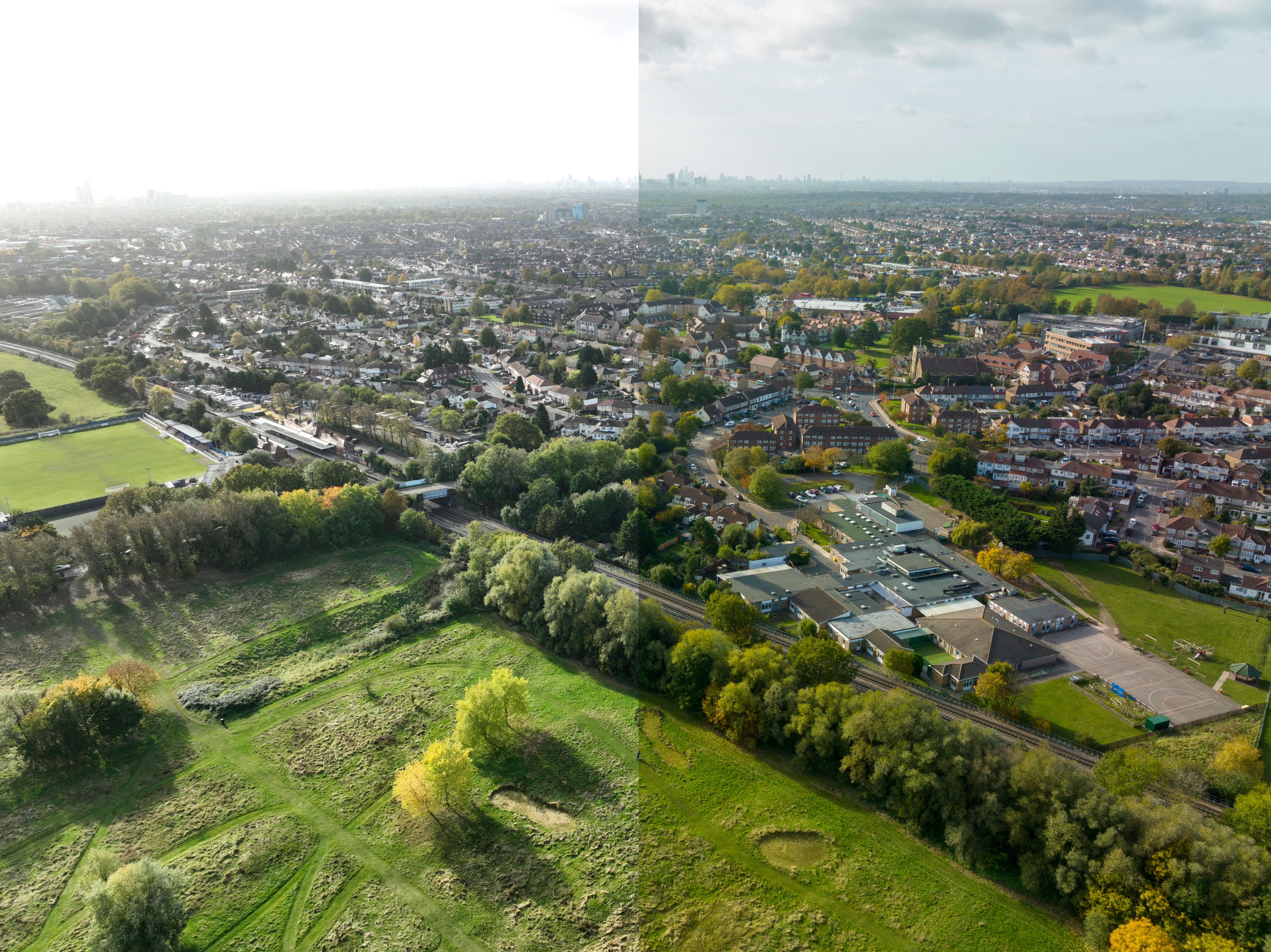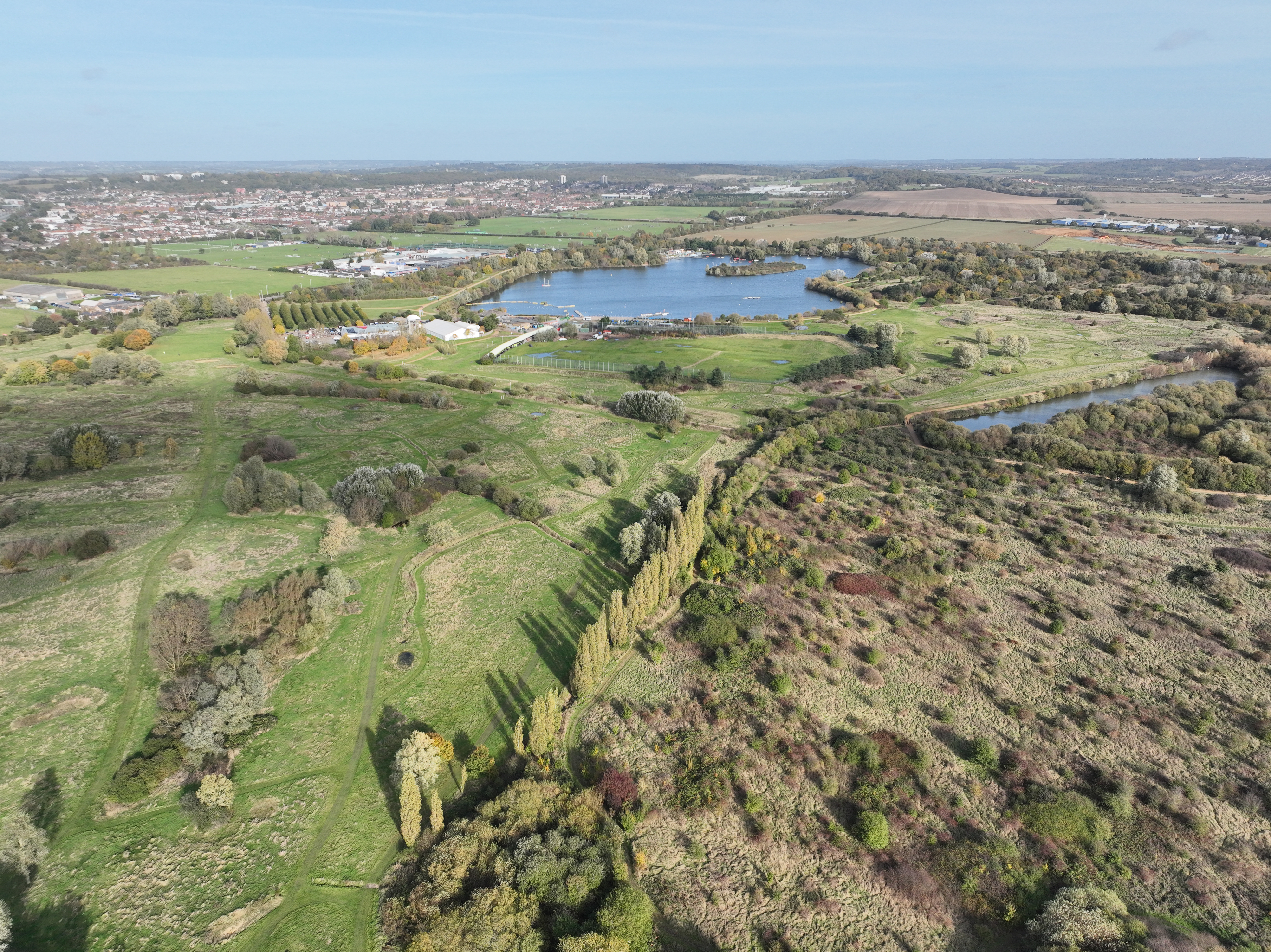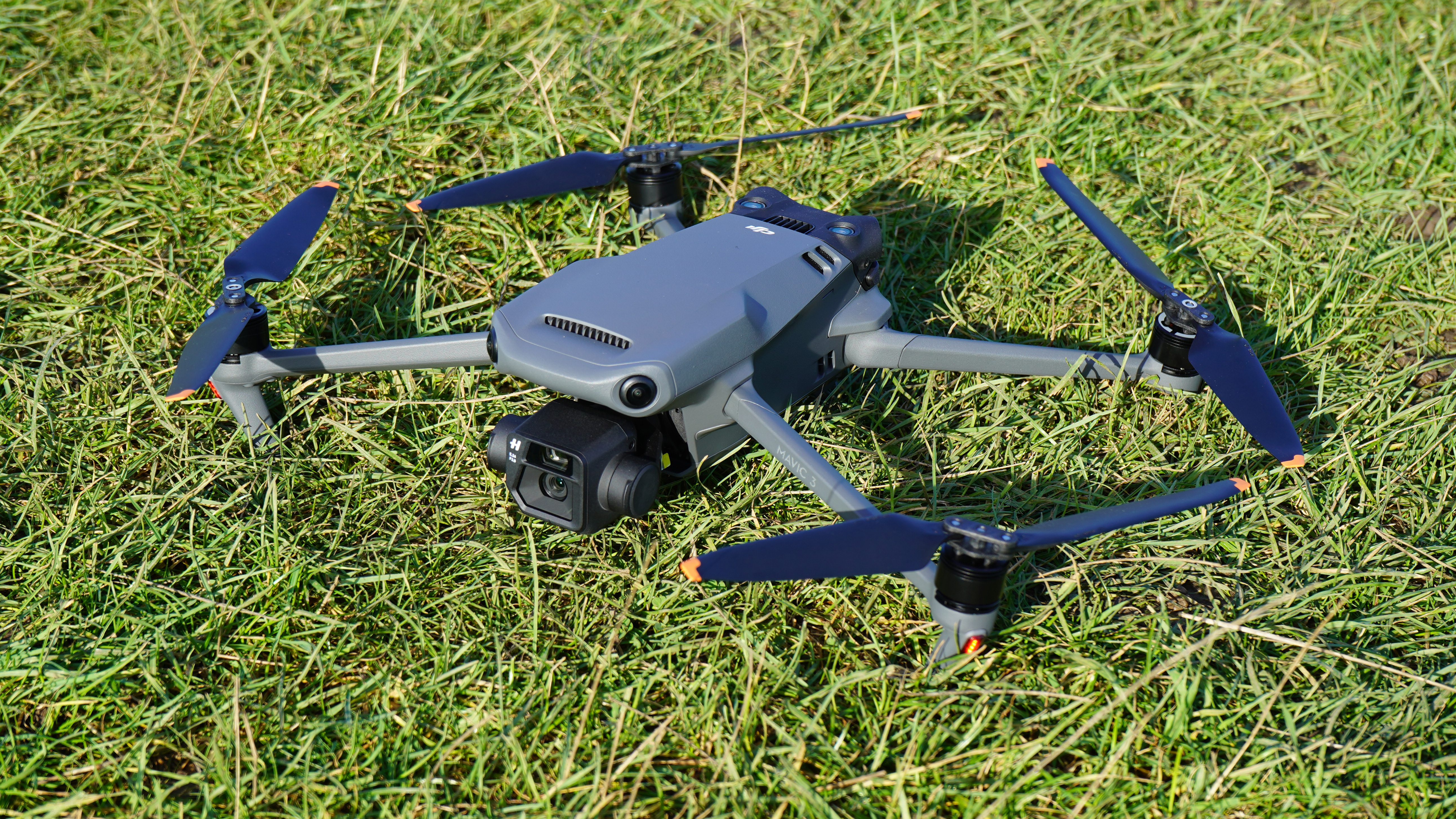Digital Camera World Verdict
The DJI Mavic 3 is a spectacular piece of equipment, seemingly blasting past the limits of battery length, sensor size, safety and more. The lens is sharp across nearly the entire imaging area, and Hasselblad’s guiding hands have ensured imaging is excellent with or without post-processing. Why not 5-stars then? It could be, when next major firmware update comes in January we’ll finally know, but until then it’s an aerial photographer’s dream which does – in some respects – require a slight bet on DJI
Pros
- +
5.1K Video
- +
Pro Res 422 HQ option on Cine version
- +
Dual camera system gives zoom view
- +
Energy-efficient return to home
Cons
- -
Zoom camera has disappointing sensor
- -
Some features due later via firmware update
- -
Price bump is significant
Why you can trust Digital Camera World
The Mavic 2 series has seemed a little unloved at the top of DJI’s folding drone series, going unchanged while the Mini and Air 2 drones both came along and were refreshed. Indeed the DJI Air 2S swiped a lot of Mavic 2 Pro’s features – especially the 1-inch sensor – and has made a reasonable contender for the crown amongst DJI’s folding drones. Until now, that is.
The Mavic 3, however – as well as bringing a raft of the incremental improvements we’ve come to expect of new editions – has not one, but two, very obvious changes which will stand out for photographers: a four-thirds image sensor and a secondary camera with hybrid zoom. In the same move, the drone abandons the distinction between Zoom and Pro, with every Mavic 3 getting the same camera unit.
The new distinction between the two Mavic 3s is between customers content with recording stills or H.264 and H.265 to microSD and those looking to capture Apple ProRes 422 HQ to an on-board 1TB SSD (and get it off again). This distinction is more like that which divides the Inspire 2 series (though those drones also offer interchangeable cameras so things can get really confusing).
We tested the Mavic 3 Fly More combo, which is the most practical version of the Mavic 3 to acquire unless you’re on a filmmaking budget and need the ProRes. It includes the standard Mavic and a good selection of accessories. There’s a lot to discuss but we think we know where you’ll want to start.
Read more: DJI Mavic 3 Cine vs Inspire 2
What’s the camera like?
Okay, actually this is two questions but, in case there is any doubt, there should be none: The ‘main’ camera is the Hasselblad with a 20-megapixel Four-Thirds sensor, which captures 5280 x 3956 pixel stills and up to 5.1k video. It, with its fixed 24mm effective focal length (EFL) lens, is the true heir to the Mavic 2 Pro. Piggy-backed to it is the zoom camera, a 162mm EFL lens with a 12-megapixel half-inch sensor, which is accessed by a ‘Explorer Mode’ button. This might be as much to prevent accidents; flying at 28x zoom is disorientating if you rely too much on the video feedback. In any case, if you were expecting both cameras to be top-tier, you’ll be disappointed.
See also: DJI Mavic 3 vs Air 2S
The best camera deals, reviews, product advice, and unmissable photography news, direct to your inbox!
There is no optical zoom lens either; operation of the zoom is through software and the system switches from one camera to the other at the appropriate moment, like a multi-lens mobile phone, though somewhat less fluidly. In Explorer Mode you typically tap through zoom multiples; 1x, 2x, 4x, 7x (the optical ratio of the zoom in comparison to the main one), 14x, 28x. Predictably the 28x option, dependant as it is on a lot of digital help, is not exactly sharp. Perhaps some softness would come from gimbal vibration at this zoom level, digital 28x isn’t going to provide the clarity a paparazzo might be hoping for.
We were initially surprised that the Explorer Mode reverted to JPEG only (no RAW) for stills and to 4K30fps for video without offering anything except EV intervention. No shutter, aperture or ISO adjustments, or even frame changes. Perhaps this will change with software updates, though clearly there is no benefit to scaling up to 5.1K – a format which provides headroom in editing where the resolution is there. From the zoom lens, it isn’t.
Video sample: switching from 4x to 7x zoom on the Mavic 3
Switching through the zoom settings causes a jump from one camera to the next as you move from 4x to 7x, with the sharpness improving as the optical resolution is in balance again.
That’s not to say that there aren’t good use cases for the zoom lens; surveyors can scale details up and filmmakers can get great shots by sticking to the 7x optical limit (below and you’re seeing the main lens digitally zoomed). The lack of control is frustrating more in the context of the main camera than perhaps it would be otherwise; one of DJI’s videos even suggests it’s simply a tool for hovering and planning your shots from a safe spot, which makes sense.
The Four-Thirds camera, on the other hand, offers full control over ISO, shutter and – unlike the Air 2S – aperture (ƒ/2.8-ƒ/11) when the ‘Pro’ mode is engaged. With twice the sensor area, it is also predictably better in low light (not of course that rules allow many drone operators can make use of this), and our results demonstrate the 12.8 stops of dynamic range.
The quality is visible in both the stills and the video, assuming of course your subject is in focus. With a potentially wide focal aperture available to you (or the auto mode) this is something you need to keep an eye on, and at times you’ll get better images by being thoughtful about aperture. (We’d also suggest a more attractive subject, if possible, but the fact this tubby tech journalist is in focus speaks well of the focus; with the Air 2S the drone tended to prefer a more distant subject at the expense of said pilot).
Video sample shot in 5K at 5fps on the DJI Mavic 3
Frame rates are impressive; 5.1K can reach 50fps (sadly it won’t stretch to 60 until you drop to 4K). That said, at 4K it can capture up to 120fps.
We found orbiting autumnal trees saw the odd struggle from the auto mode, but for the most part the system does almost too good a job, balancing the exposure of the whole view in a way helpful for flying rather than consistent cinematography. Only shooting when flying at high speed was it possible to spot moments of bleed or artefacts in the compression, and the level of detail retained by leaves on trees as the camera moved was captivating.
If you’re looking to avoid the editing time, the onboard processing is called ‘Hasselblad Natural Color Solution’ (HNCS) which handled leafy, watery and urban landscapes near-flawlessly to our eye. There is none of the aggressive saturation lazy Instagrammers use to lure in clicks, yet the hues feel lively.

The Drone
The Mavic 3 is around the same size as the Mavic 2, though opens out a little larger. Every version is supplied with a clip-round case to protect the handsome camera gimbal (assuming you can live without symmetry). Getting it on and off takes a little getting used to but gives that professional feel the device deserves and solves the issue of flapping props and at-risk cameras in drones of similar proportions. It’s no harder than the clip-on plastic protectors on other models, but it’s doing more work.
Outside the cover, the drone looks much more like the Air 2S; the legs are thinner and the vision sensors placed diagonally on the corners rather than glaring forward like those on the Mavic 2. The top and rear side vents offer a slightly aggressive posture though the spindly legs offset that.
Weighing 895g, no one is mistaking this for a toy – though it is still slightly down on the 907g Mavic 2 Pro. Much of the weight is the battery, which slides into the back. Above it (on the standard model) is a door for the microSD card and USB-C port from which you can charge the drone’s battery and access files from the 8GB of on-board storage (better than nothing, though obviously the Cine version’s 1TB is rather more spacious). Removing the microSD card is very fiddly until you’ve removed the battery, which may guard against file damage.
In terms of safety features, this drone has all the trimmings; collision sensors in every direction and obstacle avoidance which successfully avoided trees and continued in its journey when tested. Once or twice the system did alert us about non-existent dirt on the sensors (presumably the sun catching them) but otherwise they functioned well.
The tree circumvention was so effective we were surprised that the default option was to stop dead and this alternative had to be enabled via the settings. This technology is being given much greater sight range – up to 200m – for the return to home (so-called ‘Advanced RTH’) which will ensure the drone plots a more efficient route home.
The 5,000 mAh battery’s theoretical limit of 46 minutes flight is attention-grabbing (31 was the previous limit), and we found nearly every one of them in our testing. More flight time is extremely useful in terms of positioning for a shot, and will working in teams much easier, reducing the extent the drone operator delays production with battery issues. The Mavic 2 already had the jump on the Inspire 2 here – this is a leap.
The extra hovering time available combined with the number of options available does encourage hovering with eyes away from the aircraft which isn’t an approach recommended by many aviation authorities.
What DJI call O3+ – the transmission range – is 15km (9.3 miles). The legal limit is 500m, so this may seem an unnecessary leap on the Mavic 2’s 10km limit, but the newer is noticeably more reliable at distance when it comes to video drop outs and the live view is a gorgeous 60fps at 1080p. The slower 30fps on older Mavics never seemed problematic, but we can already feel it would be hard to go back to.
The Controller
There isn’t much new to be said about the controller, which carries over from the Air 2S and other recent DJI drones. It is a design we like, which feels good in the hand, and can hold the size (and weight) of an in-case iPhone 13 Pro Max. The rubberized grips and bays to store the control sticks, as well as the neat cable well, are all so neat. Better still, the charging takes place via USB-C – a tidy solution that matches the batteries. Even better, it comfortably holds enough charge on its own to keep going well beyond the three batteries supplied with the ‘Fly More’ and ‘Cine’ packs, so
You can opt to splash the cash on the new Smart Controller (included with the Cine) which is a little bigger than its predecessor and support’s the Mavic 3’s O3+ and Wi-Fi 6 capability. Pro users don’t only get to avoid plugging their phone into their controller; the included screen is bright enough for the outdoors and the download rate (beyond Wi-Fi 6 range) is 15MB/s (nearly 3 times faster). It should also shave 10m/s from the control latency, down to 120, not that this will significantly affect typical Mavic piloting.
Some pilots will grumble about the switch from the “more professional” DJI Go4 app (just check the forums) to DJI Fly, but it seems DJI are listening to and adding features – like RAW only shooting – fast; this was added in the December update. Other flight charachteristis can be edited too via curves in the Advanced settings menu, so don’t expect a switch back to the old software anytime soon.
Features coming soon
The big camera brands have all done it, and now DJI (who can reasonably be counted amongst that company) are doing it too… selling a product with a set of features promised as a future firmware patch. For the Mavic 3, as of the end of 2021 we’re still expecting perhaps the very aggressively promoted ActiveTrack 5.0 following feature as part of a 22 January 2022 update.
Thankfully other features which had existed in previous DJI drones but had evaporated at launch – including MasterShots, HyperLapse and FocusTrack – are back thanks to an earlier-than-expected update in mid December. We still need to wail for QuickTransfer, QuickShots and Panorama mode.
Previous DJI drones have produced excellent panoramas and other smooth shots, and it can only be hoped that the automatic subject tracking is the order of magnitude better than ActiveTrack 4.0 which the delay gives us reason to expect.
DJI Mavic 3: Verdict

It’s slightly too soon to give a final verdict on the Mavic 3 for those for whom the ActiveTrack 5.0 is a significant aspect – but for many the Skydio competition isn’t actually a feature that is used as much as it is talked about, which is why we feel that now most features needed for photography and video are here, we can recommend this within the limits we’ve laid out.
The pricing feels steep compared to the Mavic 2 Zoom and Mavic 2 Pro, but it seems clear that the Air 2S ‘replaces’ that while this machine sits slightly nearer the Inspire 2, retaining the Mavic’s convenience, bringing several years worth of technical development, and lacking only the even more budget-blowing interchangeable cameras. In that respect – and against the backdrop of ongoing semiconductor supply shortages – even the DJI Mavic 3 Cine model seems not unreasonably priced.
Note on the December 2021 Update: We’re re really pleased to see DJI have got some features out earlier than expected, perhaps in response to the twitterstorm the delay seem to have created. The main beneficiaries will be pros looking for some basic settings, like EXP (response curves for the control sticks ), but our overall review rating won’t change yet because we had a little more faith in what we coming eventually than some angry tweeters and because we’ve still not seen the features we really want to! (The Mavic 3 tracking a fast cyclist through a forest avoiding trees in the promo? That’s what we want…)
- Best accessories for your drone
- The best drones for beginners
- Best drones for kids
- Best underwater drones
- 12 things you need to make money from a drone
- The best camera insurance for photographers
- The best camera backpacks

With over 20 years of expertise as a tech journalist, Adam brings a wealth of knowledge across a vast number of product categories, including timelapse cameras, home security cameras, NVR cameras, photography books, webcams, 3D printers and 3D scanners, borescopes, radar detectors… and, above all, drones.
Adam is our resident expert on all aspects of camera drones and drone photography, from buying guides on the best choices for aerial photographers of all ability levels to the latest rules and regulations on piloting drones.
He is the author of a number of books including The Complete Guide to Drones, The Smart Smart Home Handbook, 101 Tips for DSLR Video and The Drone Pilot's Handbook.













